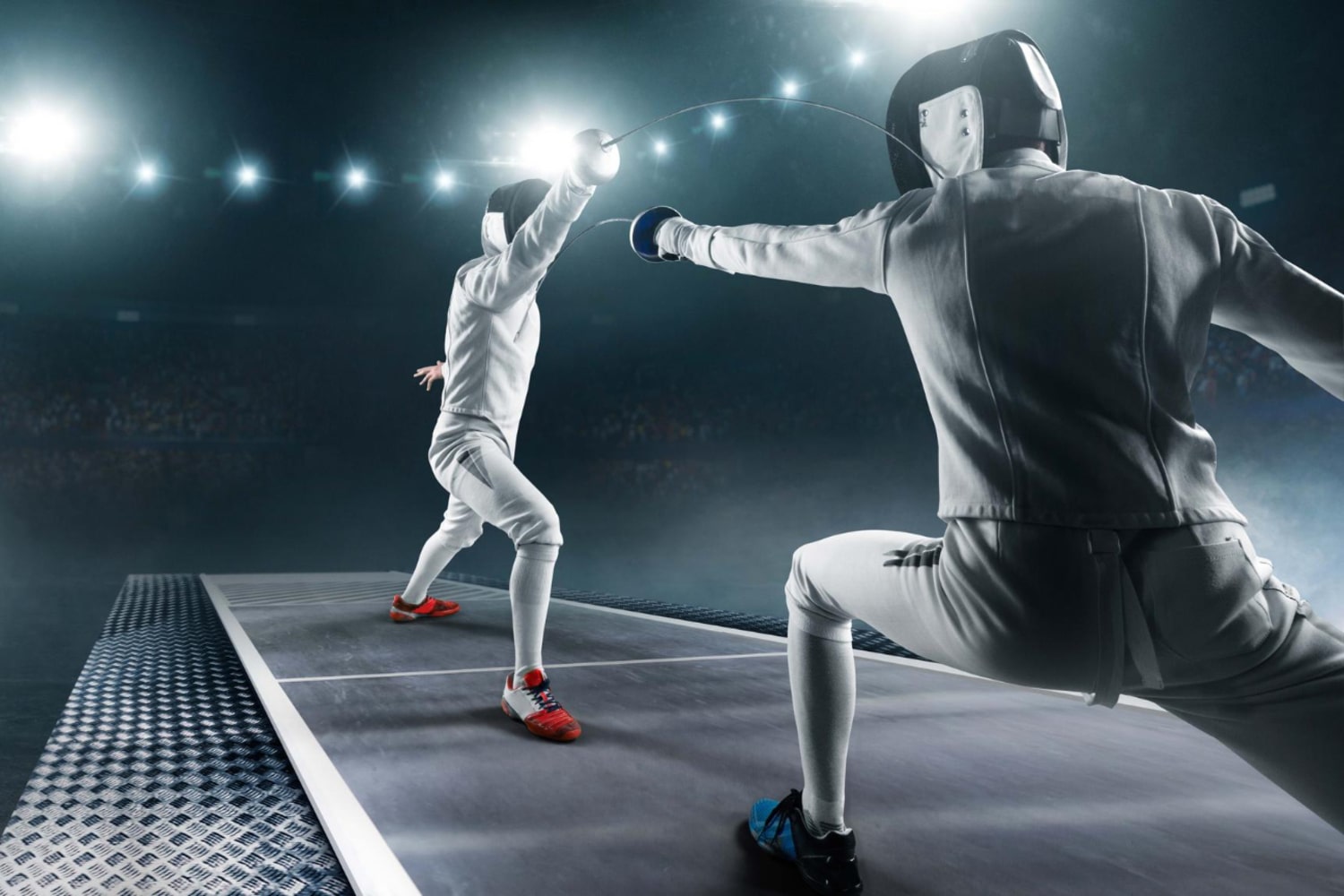Fencing is one of the oldest sports, combining the art of combat with the elegance of movement. It originated as a form of self-defense and gradually developed into a sporting discipline with clear rules and traditions. Today, fencing is an Olympic sport that demands lightning-fast reactions, tactical intelligence and strong physical conditioning. It is not only a fight with blades but also a strategic game where planning and precision are crucial. In this article you will discover interesting facts, incredible facts and fascinating facts about fencing that you may not have known.
- Fencing is one of the few sports that were part of the first modern Olympic Games in 1896. Since then, it has remained a permanent fixture in the Olympic program. This proves its deep traditions and importance in the sporting world.
- There are three main types of weapons in fencing: foil, épée and sabre. Each has its own rules for scoring and style of combat. This variety makes the sport diverse and allows athletes to specialize.
- A fencer’s uniform is designed to provide maximum protection while ensuring freedom of movement. The outfit includes a mask, jacket, trousers and gloves made of puncture-resistant material. Modern suits can withstand strikes at speeds exceeding 100 km/h.
- Fencing uses an electronic scoring system to register touches. The weapons are fitted with sensors that send a signal when contact is made. This allows results to be determined with accuracy and objectivity.
- The foil is considered the most technically demanding weapon. It follows the rule of priority, meaning that the point is awarded to the fencer who initiated the attack first. This requires not only speed but also strong tactical thinking.
- The épée is the simplest weapon to understand, as there is no priority rule. The fencer who lands the first valid hit scores the point. This makes épée bouts very dynamic and exciting.
- The sabre is unique in that both thrusts and cutting actions count. The target area includes the upper body, head and arms. Sabre matches are known to be the fastest and most aggressive.
- The word “fencing” derives from the German word fechten, meaning “to fight with swords.” Different countries developed their own schools and traditions. Modern fencing combines the best elements from many of these systems.
- In medieval Europe, fencing was a required skill for knights and nobles. Mastery of the sword was considered a mark of nobility. Often, fencing ability determined social status.
- In the 16th century, Spain developed the famous rapier school, which had a great influence on European fencing techniques. It emphasized geometry of movement and precise calculations. This gave it a philosophical depth compared to other schools.
- Fencing demands high levels of coordination and quick reflexes. Athletes train to perfect their movements to the point of automation, allowing them to respond instantly to an opponent. It is a combination of sport and art.
- In the 1980s, the electronic mask for sabre fencing was introduced. It allowed head hits, which had been difficult to judge, to be recorded accurately. This greatly improved the objectivity of refereeing.
- Women first competed in fencing at the Olympic Games in 1924. At that time, they only competed in foil. Over time, épée and sabre were added, giving women the full range of disciplines.
- Fencers can react with incredible speed. Touches are recorded within fractions of a second, and the outcome of a bout can depend on millimeter precision. This makes fencing especially thrilling to watch.
- A traditional gesture in fencing is the salute performed before and after each bout. It symbolizes respect for the opponent and the spirit of sportsmanship. This custom dates back to the days of knightly tournaments.
- Modern fencing is practiced in many countries, but the most successful athletes come from France, Italy, Hungary and Russia. These nations are considered leading centers of the sport.
- In Ukraine, fencing also has its traditions. Ukrainian athletes have won medals at international competitions, including the Olympic Games. This proves the high level of fencing development in the country.
- Fencing is often used in film to create spectacular fight scenes. However, cinematic duels differ greatly from true fencing matches. In movies, the focus is on drama and visual appeal rather than strict rules.
- There is also a separate discipline called historical fencing. It revives old combat techniques with swords, halberds and spears. It is not only a sport but also a way of studying history and culture.
Fencing is a sport that unites tradition with modern technology, physical strength with strategic thinking. It develops both body and mind, teaching focus and respect for the opponent. Such interesting facts, incredible facts and fascinating facts help us better understand this noble discipline. You may not have known many of them, but now fencing has revealed its beauty and diversity to you.





